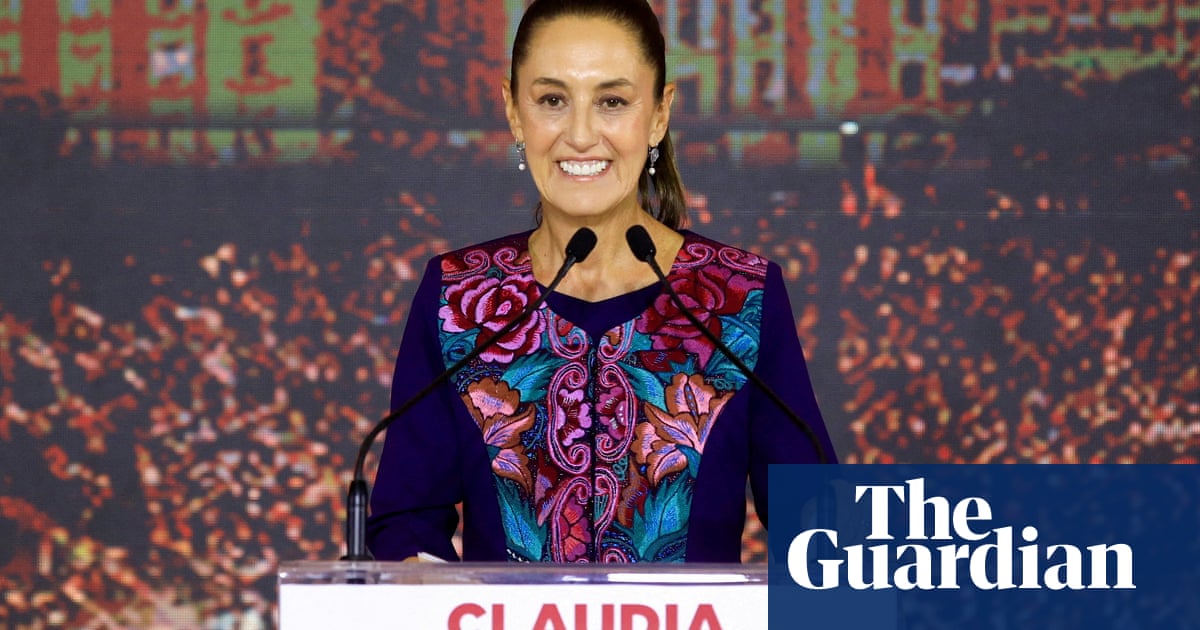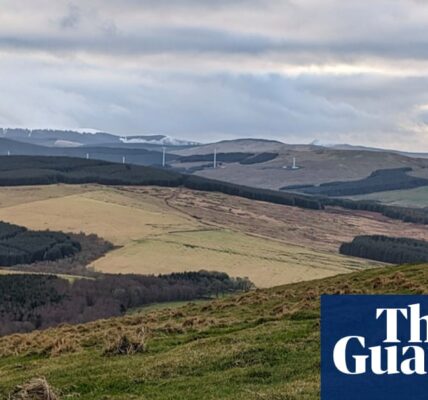
The month before Mexico’s 2 June presidential vote the country was bedeviled by water cuts and blackouts as a record heatwave took the country beyond red and into an ominous purple on the weather map.
As dehydrated monkeys dropped dead from trees, the landslide victory of Claudia Sheinbaum, a climate scientist, might look like salvation. But her record paints a more complicated picture – one where climate convictions have often, and may still, come second to political pragmatism.
Sheinbaum will inherit a country that has slipped from frontrunner to laggard on climate policy – in part due to the policies of her predecessor and ally, Andrés Manuel López Obrador, which she has promised to continue.
López Obrador, who comes from the oil-rich state of Tabasco, prioritised “energy sovereignty” by growing the role of state companies and striving for self-sufficiency.
This was manifested in a $17bn oil refinery and colossal injections of cash and tax cuts for Pemex, the most indebted state oil company in the world, and one of the biggest historical polluters.
One result was to entrench a dirty-energy matrix, with almost 80% coming from fossil fuels.
Meanwhile, Mexico’s climate commitments were left to languish. It is one of just two G20 countries not to have a net-zero target, and it’s a long way from reducing emissions by 35% by 2030, under the Paris agreement.
“Not only are we nowhere near it, but we don’t have any specific and detailed plans to achieve it, let alone financing and concrete infrastructure projects,” said Diego Rivera Rivota, a researcher at Columbia University’s Center on Global Energy Policy.
This is despite the fact that Mexico is highly vulnerable to climate change – as was driven home by the extraordinary hurricane that hit Acapulco in October 2023, killing dozens and causing catastrophic damage.
“Acapulco taught us a big lesson. We weren’t prepared for that,” said Gustavo Alanís, general director of CEMDA, an environmental NGO. “These floods, droughts, hurricanes and heatwaves aren’t just going to continue, but possibly get more severe and frequent.”
Many hope Sheinbaum’s background as a climate scientist – one who contributed to the reports of the Nobel prize-winning Intergovernmental Panel on Climate Change – will shine through once she takes office on 1 October, notwithstanding her reliance on López Obrador to win the presidency.
When she was mayor of Mexico City, there were certain signs of the approach she might take as president, with an emphasis on solar energy, electrified public transport and a new cable car line.
But then, the city saw no great improvement in either of its fundamental environmental problems: air pollution and water shortages.
Meanwhile, on the campaign trail, Sheinbaum promised all things to all people, saying she would both continue López Obrador’s policies but also do more for the environment.
This means the Maya Train – one of López Obrador’s flagship infrastructure projects to develop historically poorer regions – will continue to cut through Latin America’s second-largest tropical forest. Sheinbaum has even suggested expanding it to neighbouring Belize and Guatemala.
There will also be more backing for Sembrando Vida, López Obrador’s pet forestry and rural development initiative that has had money plowed into it as budgets for state environmental agencies have been slashed – even though its results are little understood, and there are reports it even promotes deforestation.
And there will be more public money for Pemex as it staggers on under its debt burden and tries to increase its oil output.
On the other hand, Sheinbaum has also suggested that Pemex expand its remit to include mining for lithium, a crucial element of electric batteries.
And there was a campaign pledge to spend $14bn on clean-energy projects. That would mark a radical change from López Obrador’s government, which not only invested very little in renewables, but also revoked or blocked permits for private projects.
Experts also expect to see more action on the demand side of the equation, with an emphasis on electrification of public transport and incentives for residential solar panels. “This is a country with 300 days plus of sun,” said Rivera Rivota. “It has massive potential for that.”
Although Sheinbaum’s proposals lack detail at this stage, she has repeatedly emphasised the need for long-term planning for both energy and water – looking not just to 2030, but to 2050 and beyond.
“[Long-term planning] was not guaranteed during the current administration. We had several legal and regulatory changes, and other attempts at change that led to battles in court,” said Rivera Rivota. “As long as it’s clear what the rules of the game are, what the legal framework is, I think Mexico has enormous potential for investment in renewable energy.”
The scale of victory for Sheinbaum’s Morena party, which seems to have given it a supermajority in one and perhaps both houses of congress, as well as the governorships of 24 of Mexico’s 32 federal entities, has given Sheinbaum a huge mandate as president-elect.
But whether she wants or will be able to move away from her predecessor’s policies is an unknown.
López Obrador will remain a powerful figure – and his continued support may be needed to help hold together Morena, the party that he founded but has since expanded to house disparate ideologies, and fractious groups.
“She was never going to contradict the president during the campaign,” said Rivera Rivota. “But who knows what will happen when she’s sitting in the Palacio Nacional and making the calls herself.”
“There is hope, and there is a vote of confidence [in Sheinbaum],” said Alanís of CEMDA. “But here we will be vigilant, and we will be checking the actions of her administration every day.
“And if necessary, we will raise our voice.”
Source: theguardian.com




